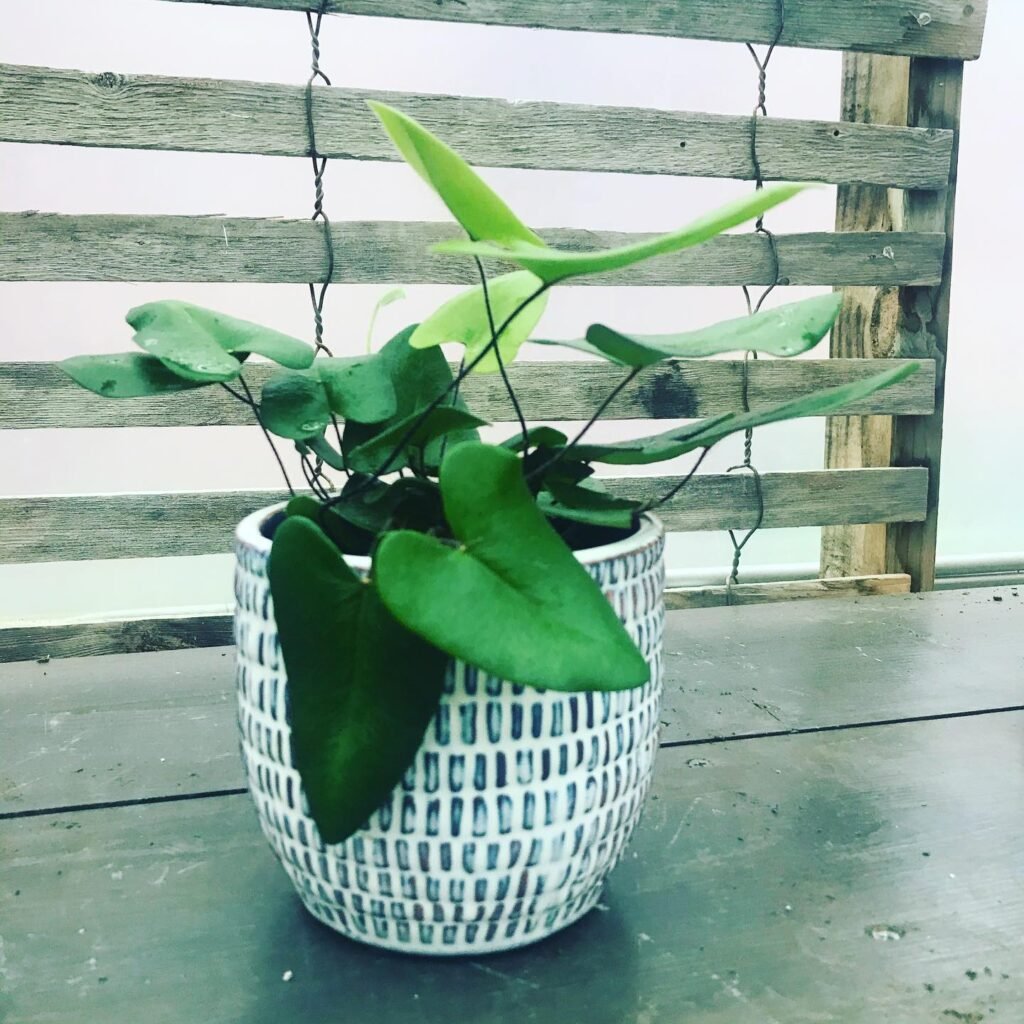Did you know that Hemionitis Arifolia, also known as the Heart Fern, is one of the most coveted houseplants among indoor plant enthusiasts? Its petite size and distinct heart-shaped leaves have captured the hearts of many. In this article, I will guide you through the essentials of Hemionitis Arifolia plant care, ensuring that your Heart Fern thrives in your home and brings you joy for years to come.
Appearance of Hemionitis Arifolia (Heart Fern)
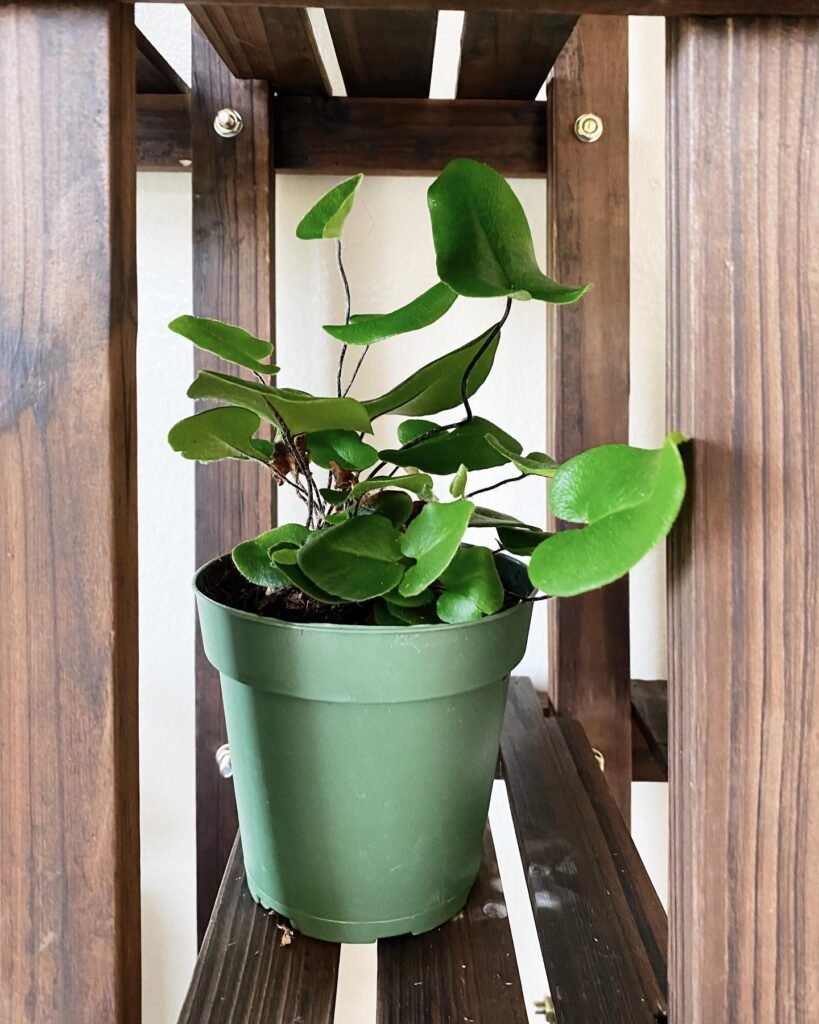
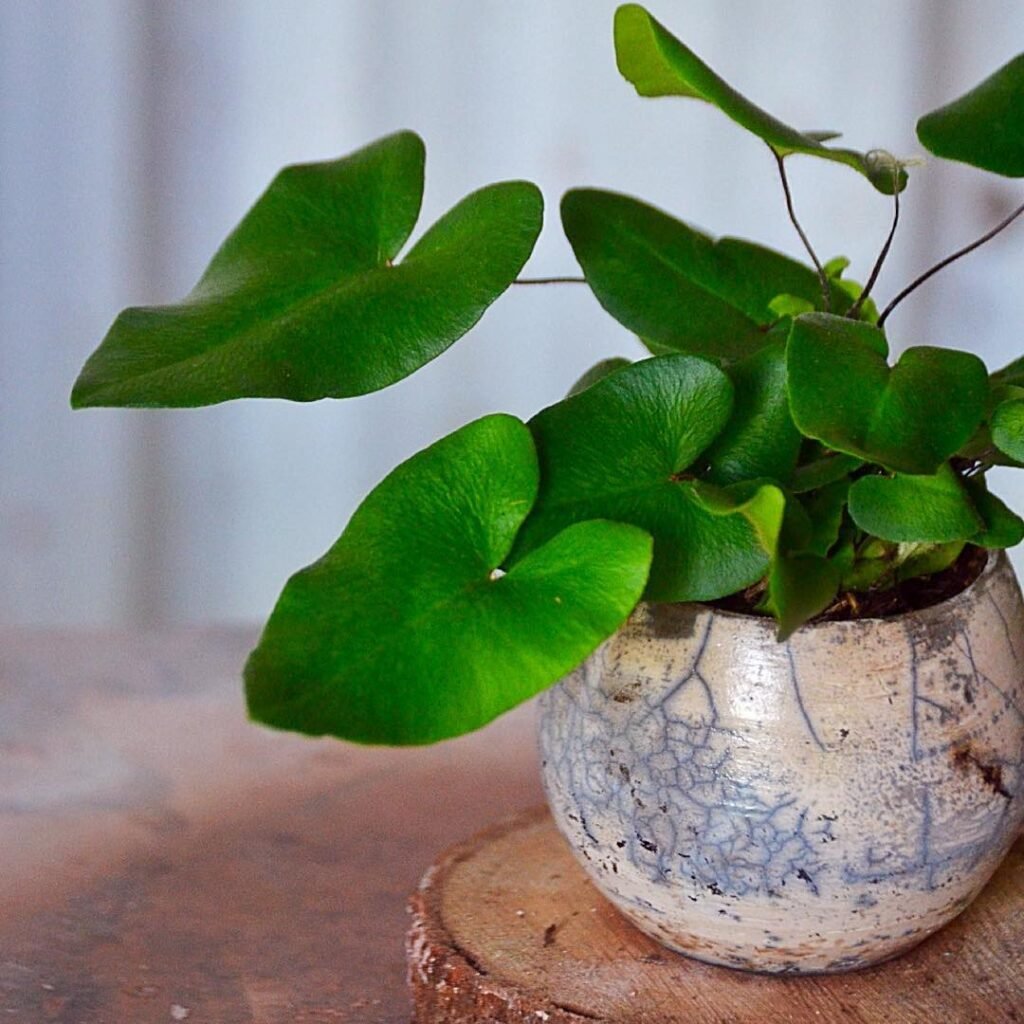
Hemionitis Arifolia, commonly known as the Heart Fern, is a delightful dwarf fern characterised by its lush, dark green leaves that gracefully take the shape of hearts. This charming plant maintains a compact stature, typically reaching a modest height of 6-8 inches, making it an ideal addition to small spaces or as an enchanting tabletop companion.
The stems of the Heart Fern present a striking contrast to its soft foliage, with their nearly black hue and a dry, wood-like texture that adds a unique visual interest to the plant’s overall aesthetic. This distinctive combination of the heart-shaped leaves and the dark, textured stems contributes to the Heart Fern’s charming and attractive appearance, securing its place as a beloved choice among foliage plant enthusiasts.
For those new to gardening, the Heart Fern offers an excellent opportunity to care for a plant that, while exquisite in appearance, doesn’t demand extensive maintenance. Its ability to thrive in indirect light conditions and preference for consistent moisture levels make it a forgiving choice for beginners looking to add a touch of elegance and affection to their indoor garden.
Whether you’re an experienced plant lover or just starting your gardening journey, the Heart Fern can bring a sense of warmth and joy to your home with its unique form and the serene vibe it exudes. Its popularity is well-deserved, as it not only enhances the beauty of any space it inhabits but also symbolises love and care, making it a perfect gift for loved ones or a treasured personal keepsake.
 The Heart Fern (Hemionitis Arifolia) is loved for its heart-shaped leaves, symbolising love. Native to Southeast Asia, this fern thrives in humid, indirect light conditions, making it perfect for adding a touch of the tropics indoors. Besides its beauty, the Heart Fern also purifies the air, combining aesthetics with health benefits in a compact, easy-to-care-for plant.
The Heart Fern (Hemionitis Arifolia) is loved for its heart-shaped leaves, symbolising love. Native to Southeast Asia, this fern thrives in humid, indirect light conditions, making it perfect for adding a touch of the tropics indoors. Besides its beauty, the Heart Fern also purifies the air, combining aesthetics with health benefits in a compact, easy-to-care-for plant.
Light Requirements for Hemionitis Arifolia
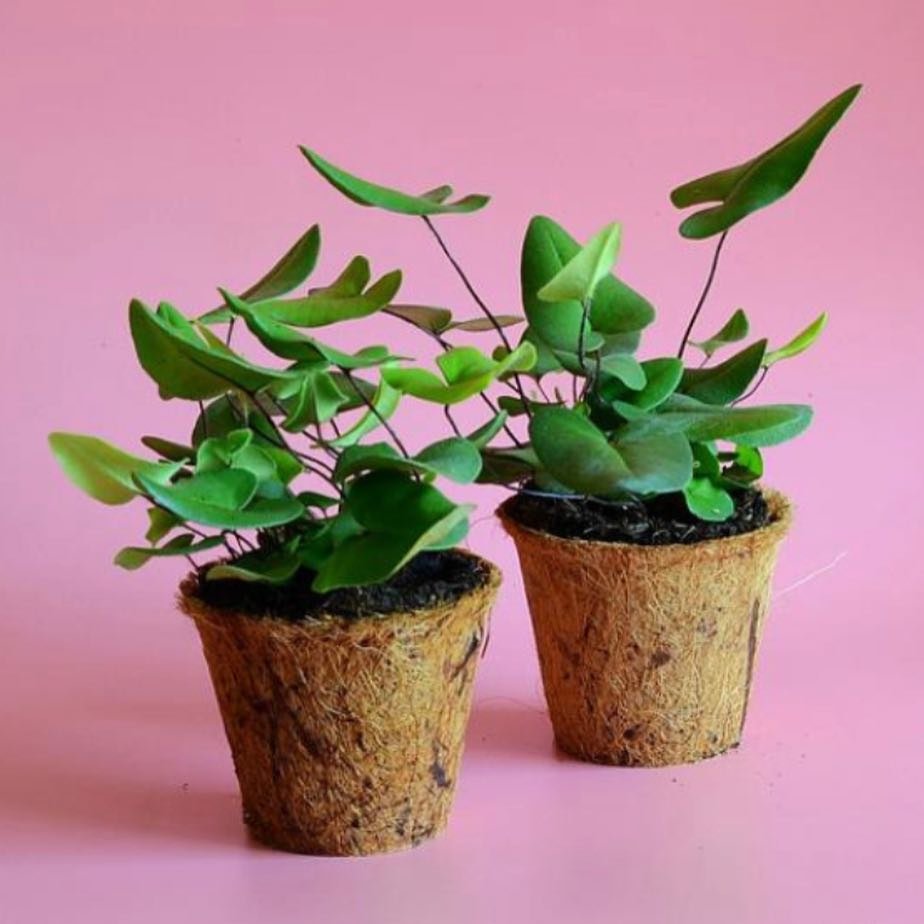
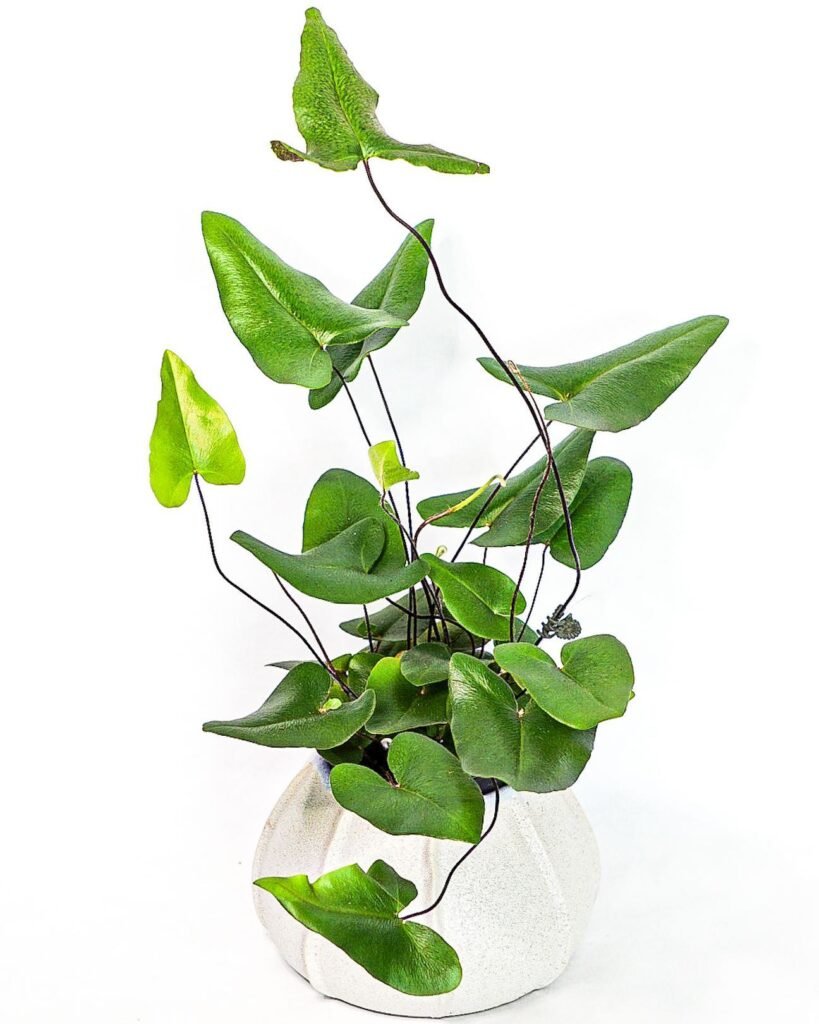
The Hemionitis Arifolia, commonly known as the Heart Fern, is a plant that thrives with the correct lighting conditions. Here’s a more detailed look into how to best care for this plant, presented in bullet points for clarity:
- Bright, Indirect Light:
- The Heart Fern prefers locations that receive bright, indirect sunlight. This kind of lighting encourages healthy and vigorous growth.
- Dappled Shade Works Too:
- A spot under dappled shade is also ideal, simulating the natural light conditions the Heart Fern would experience under the canopy of taller plants or trees.
- Adapting to Lower Light:
- While the Heart Fern can adapt to lower light levels, gardeners should be aware that its growth rate may decrease, and the rich green color of its foliage could become less vibrant in such conditions.
- Avoid Direct Sunlight:
- It’s crucial to protect the Heart Fern from direct sunlight. The strong rays can damage the plant’s tender leaves, leading to potential health issues and affecting its overall appearance.
- Importance of Proper Lighting:
- Ensuring that your Hemionitis Arifolia receives the appropriate amount of light is essential. Proper lighting not only supports the plant’s health but also enhances its beautiful foliage, making it a standout addition to your indoor garden.
By paying attention to these lighting requirements, you can help your Heart Fern flourish, adding a touch of natural beauty to your home with its unique heart-shaped leaves and lush greenery.

Watering Tips for Hemionitis Arifolia (Heart Fern)
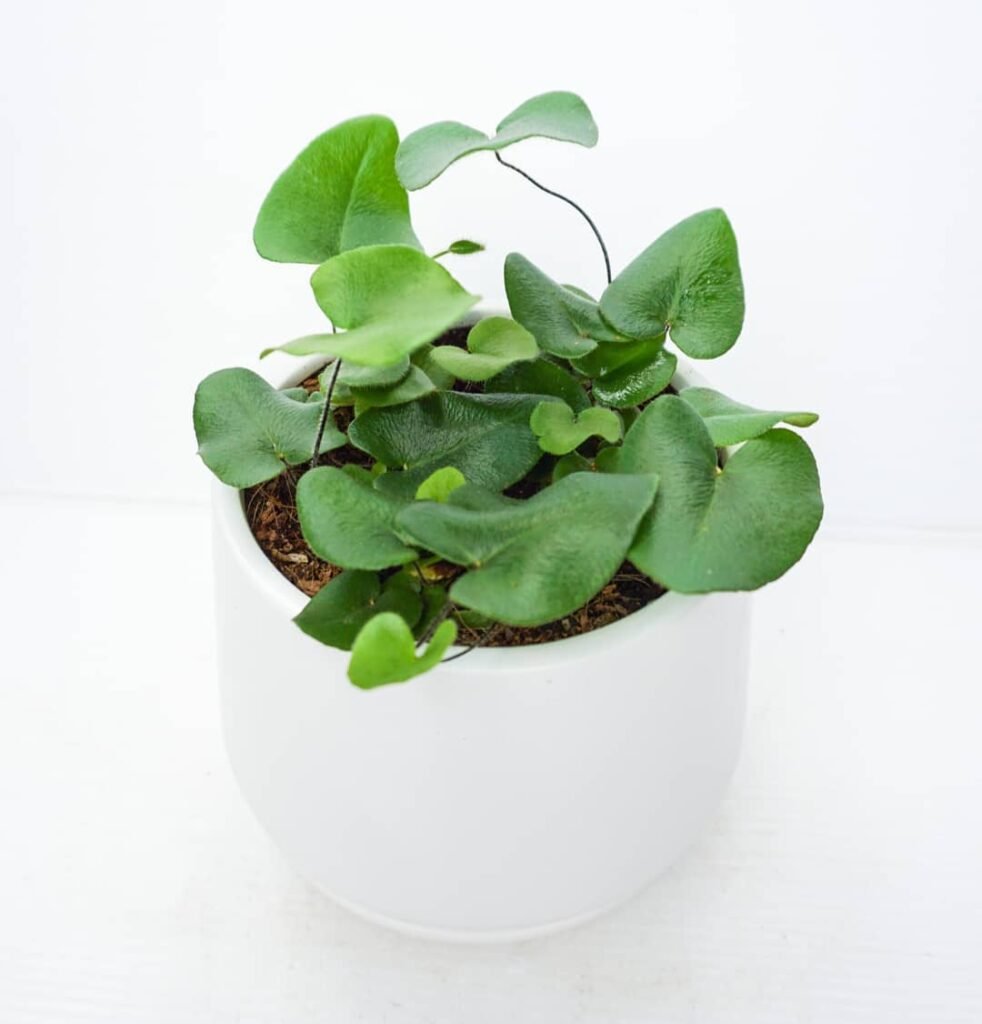
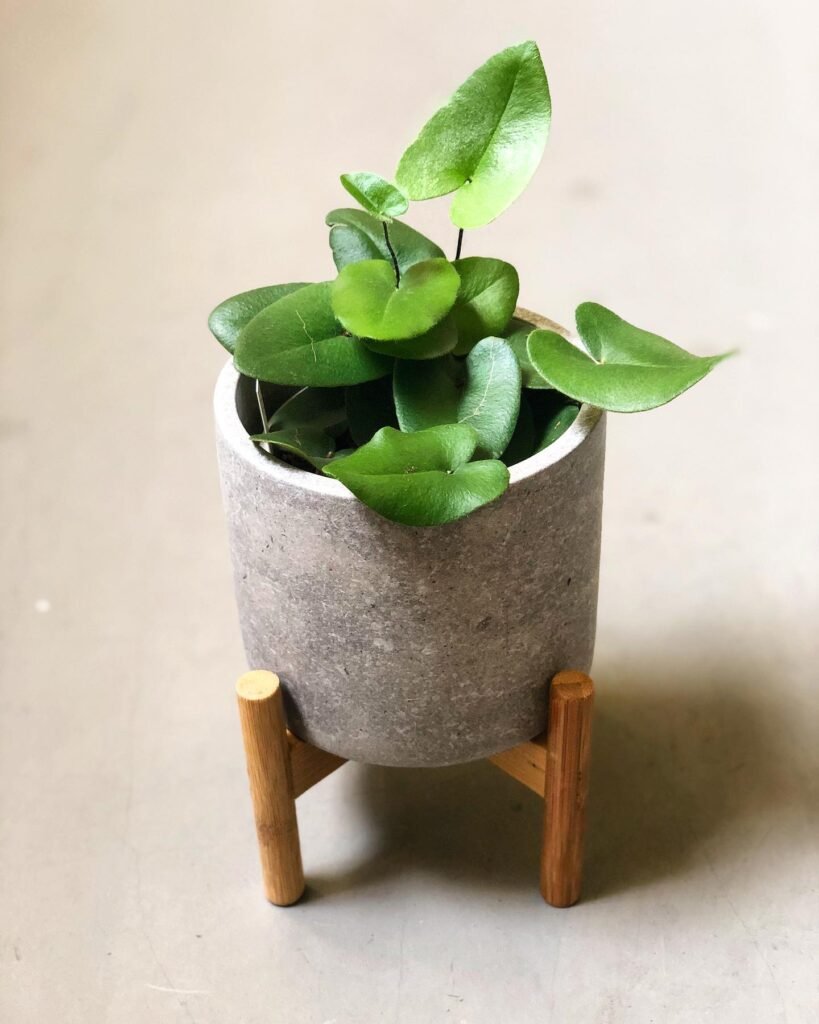
When it comes to caring for Hemionitis Arifolia, also known as the Heart Fern, proper watering is crucial for its health and vitality. As an indoor plant enthusiast, you’ll want to follow these tips to ensure your Heart Fern thrives:
- Moisture is key: The Heart Fern prefers consistently moist soil, but be careful not to overwater. It’s important to strike a balance between keeping the soil damp and avoiding waterlogging, which can lead to root rot.
- Check the soil: To determine when it’s time to water, gently touch the top 1-2 inches of soil. If it feels dry to the touch, it’s time to give your Heart Fern a drink.
- Choose the right water: Using room-temperature, filtered, or rainwater is ideal for the Heart Fern. Tap water may contain chemicals or minerals that can cause leaf-tip browning, so it’s best to avoid it if possible.
- Watch for signs of dehydration: If you notice the leaves of your Hemionitis Arifolia starting to curl, it’s a sign that the plant needs more water. Be attentive to these cues and adjust your watering accordingly.
Remember, finding the right balance is key to successfully caring for your Heart Fern. By following these watering tips, you’ll help your Hemionitis Arifolia thrive and maintain its charming beauty as an indoor plant.

Fertilizing and Soil for Hemionitis Arifolia
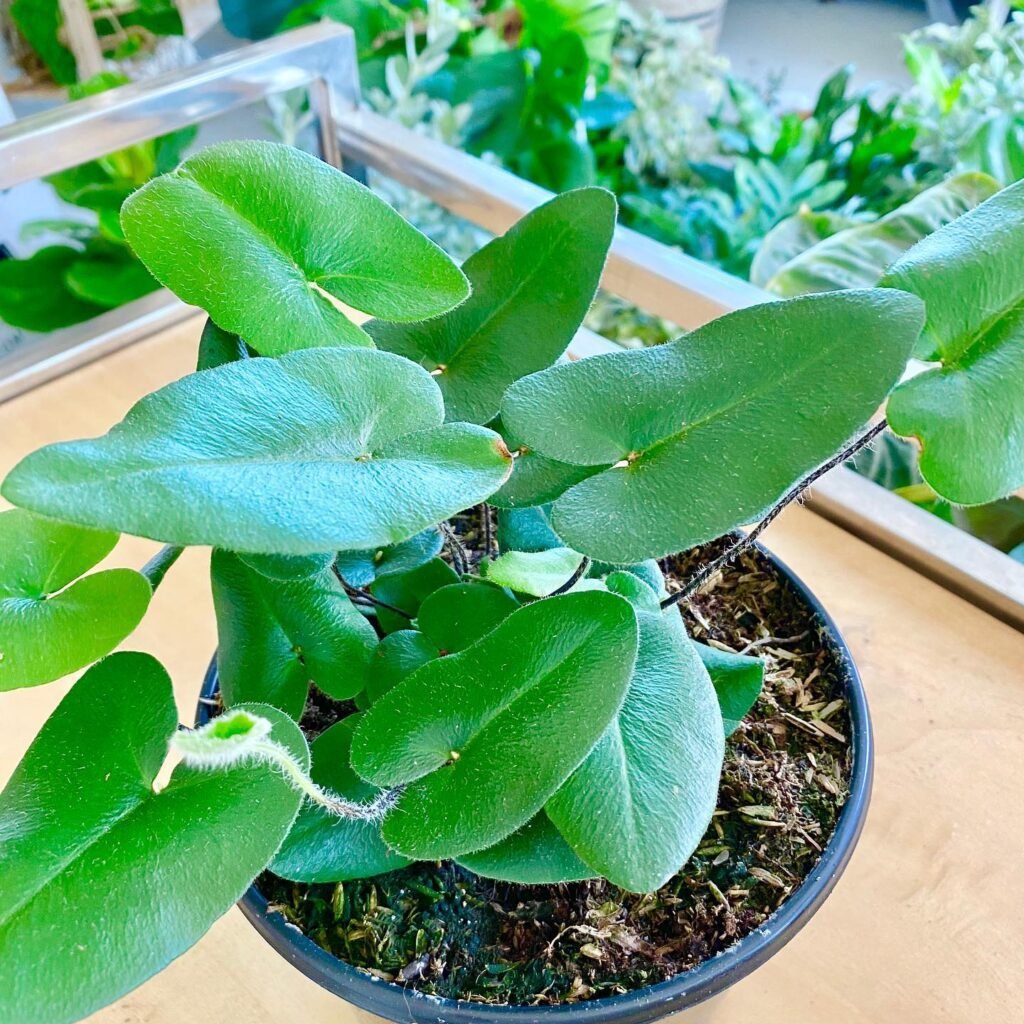
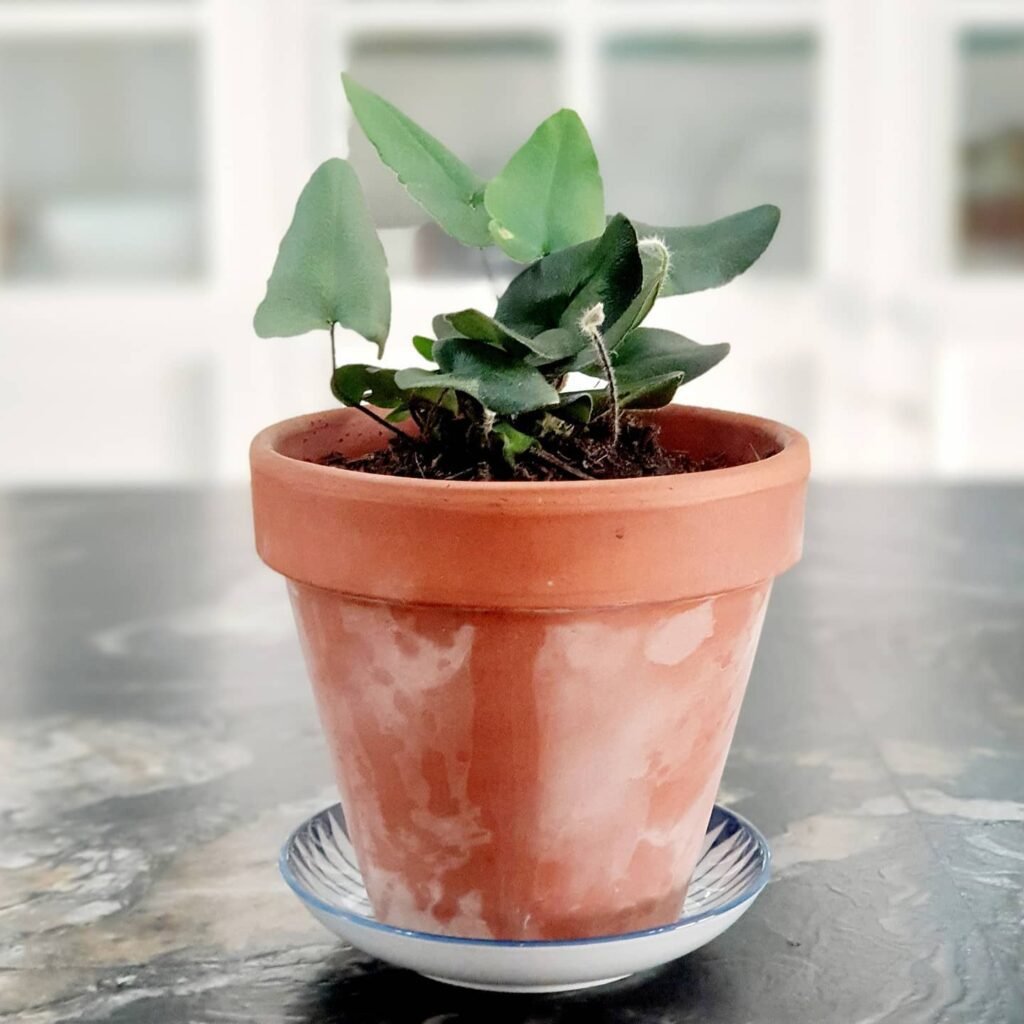
Hemionitis Arifolia, the Heart Fern, can benefit greatly from regular fertilization during its growing season. To promote vibrant and healthy growth, it is recommended to use a balanced, water-soluble fertilizer at half strength every 4-6 weeks. Following the manufacturer’s instructions is important to avoid the risk of over-fertilization, which can lead to foliage burn or other issues.
The ideal soil composition for the Heart Fern is crucial for its well-being. It is best to use a mixture of organic matter, such as peat moss, leaf mold, and compost, combined with perlite or vermiculite. This combination ensures adequate aeration and moisture retention, allowing the plant to thrive.
Maintaining a slightly acidic to neutral pH range of 5.5 to 6.5 is preferable for promoting healthy growth and development of Hemionitis Arifolia.

Pruning and Maintenance for Hemionitis Arifolia
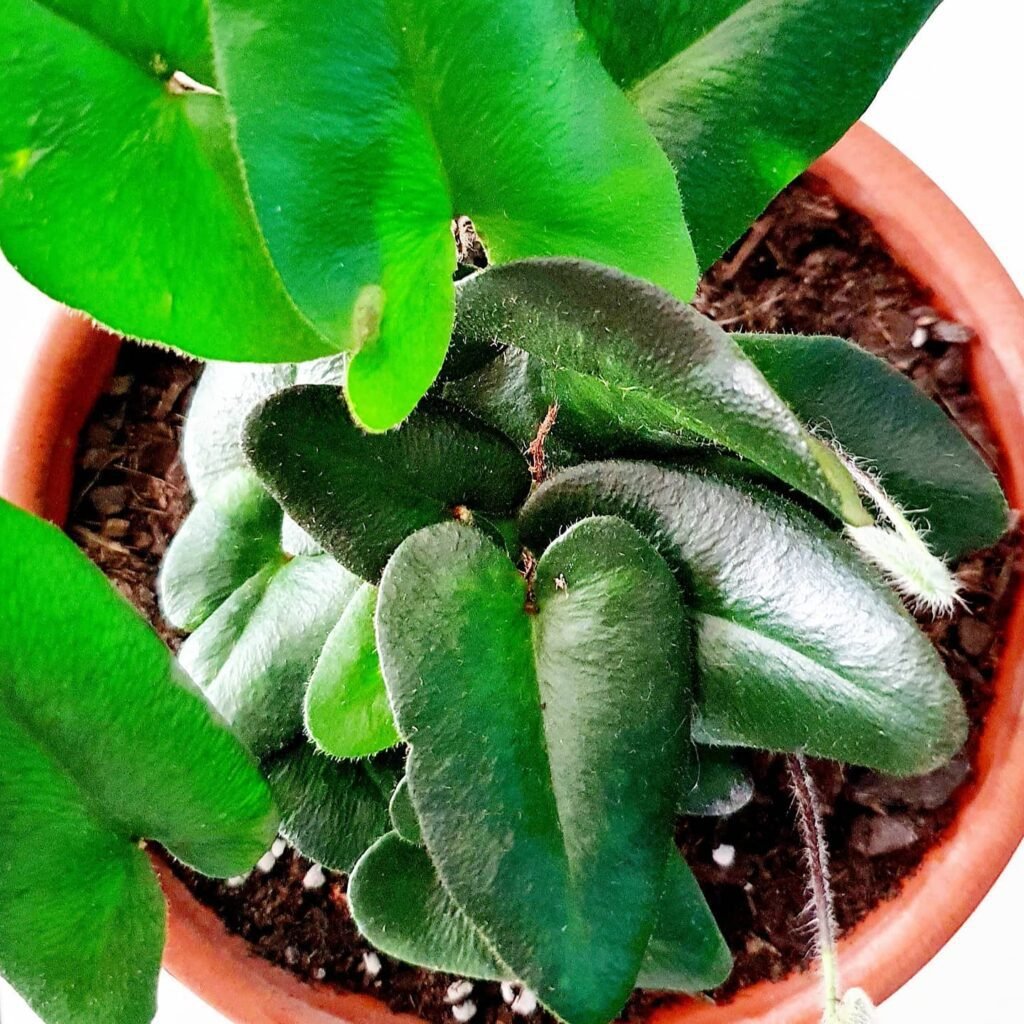
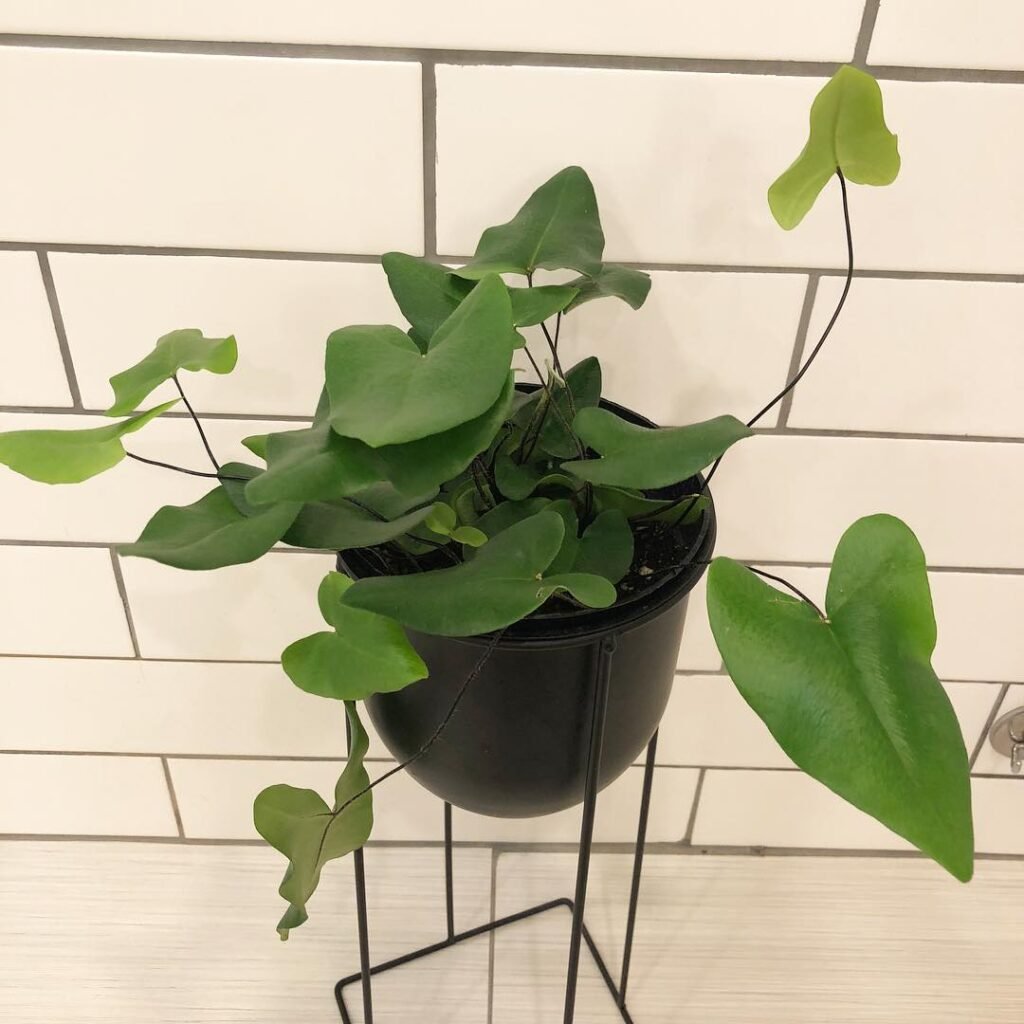
Regular pruning is necessary for maintaining the appearance of Hemionitis Arifolia, the Heart Fern. Removing dead, damaged, or yellowing fronds will help promote healthy growth and reduce the risk of pests and diseases. It is recommended to use clean, sharp scissors or pruning shears to trim the fronds at their base, taking care not to damage the surrounding healthy foliage. Pruning will also encourage a more compact and attractive growth habit.
Regular maintenance, such as monitoring for pests and diseases, is essential for the overall health and longevity of the Heart Fern. Keep an eye out for common issues like browning leaf tips, yellowing leaves, slow growth, or curled leaves. Address these issues promptly by adjusting factors such as low humidity, inadequate watering, poor drainage, or insufficient light. Implementing appropriate pest control measures, such as insecticidal soap or neem oil, will help keep your fern healthy and pest-free.

Propagating Hemionitis Arifolia (Heart Fern)

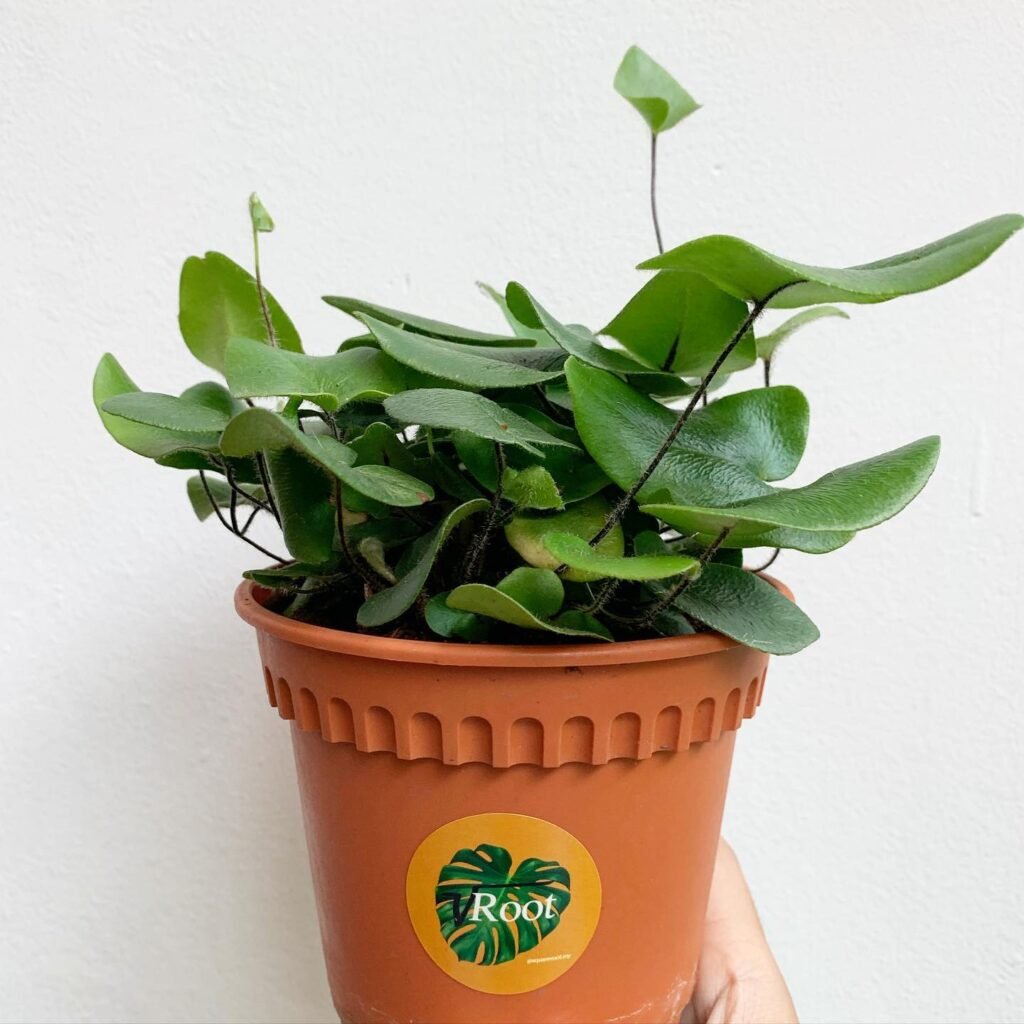
Hemionitis Arifolia, the Heart Fern, is a delightful addition to any indoor plant collection, and if you want to multiply your ferns, propagation through division is the way to go. This method is not only easy but also the fastest way to expand your fern collection.
When it comes to propagating Hemionitis Arifolia, timing is crucial. Spring, when the growth rate is at its peak, is the best time to proceed with division.
- Start by gently removing the Heart Fern from its pot, taking care not to damage the delicate fronds.
- Once removed, carefully separate the root ball into smaller sections. Make sure each division has a healthy root system and a few fronds, as these are essential for the new plant’s growth.
- Plant each division in a new pot filled with nutrient-rich, well-draining soil. Ensure the pot has proper drainage holes to prevent waterlogging.
- After planting, water the divisions thoroughly, providing enough moisture to help them establish themselves.
To help these new plants thrive, it’s important to provide them with the right care. Maintain optimal temperature, humidity, and lighting conditions, ensuring they have the best environment for growth.
Propagation through division is a fantastic way to multiply your Hemionitis Arifolia collection. With a little care and attention, these divisions will grow into healthy new plants, allowing you to enjoy the beauty of Heart Ferns throughout your home.

Repotting Tips for Hemionitis Arifolia
When it comes to Hemionitis Arifolia, also known as the Heart Fern, repotting is typically necessary every 2-3 years to ensure the plant has enough room to grow and thrive. Here are some helpful repotting tips to keep your Heart Fern happy:
- Choose the Right Pot: Select a new pot that is one size larger than the current one. It’s important to choose a pot with proper drainage holes to prevent waterlogging, which can negatively impact the fern’s health.
- Gently Remove the Fern: Carefully remove the fern from its old pot, being mindful not to damage the fragile roots. If the roots are tightly bound, tease them apart slightly to promote healthy growth.
- Replant Carefully: Place the fern in the new container, ensuring that the soil level remains the same as before. This will help maintain the proper balance of moisture and nutrients for the plant.
- Thoroughly Water: After repotting, give the fern a thorough watering to help it settle into its new home. Ensure the soil is evenly moist, but not waterlogged, to avoid root rot.
By following these repotting tips, you can provide your Hemionitis Arifolia with the space it needs to flourish and continue to bring beauty to your indoor plant collection.
 The Heart Fern, a living fossil, has thrived for millions of years. Growing it connects you to Earth’s ancient natural history, adding a timeless charm to your space.
The Heart Fern, a living fossil, has thrived for millions of years. Growing it connects you to Earth’s ancient natural history, adding a timeless charm to your space.
Common Issues and Pests for Hemionitis Arifolia
Hemionitis Arifolia, the Heart Fern, is generally a resilient indoor plant. However, it may encounter some common issues that can affect its health and appearance. One such problem is browning leaf tips, which can be caused by low humidity or inadequate watering. To prevent this, consider placing a tray of water near the plant or using a humidifier to increase the moisture level in the air. It’s also crucial to ensure that you are watering the fern correctly, allowing the topsoil to dry slightly between waterings.
Another issue that may arise is yellowing leaves. This can be a sign of overwatering or inadequate drainage. To address this, make sure your Heart Fern is in a well-draining pot and avoid letting it sit in excess water. Adjust your watering schedule accordingly and check the soil moisture regularly to maintain the right balance.
Slow growth and curled leaves are also common problems associated with Hemionitis Arifolia. These issues can be caused by insufficient light. Ensure that your Heart Fern is placed in a location with bright, indirect sunlight or dappled shade. If necessary, consider providing supplemental light using a grow light to promote healthy growth and prevent leaf curling.
In terms of pests, aphids, spider mites, and mealybugs are the main culprits that may infest your Heart Fern. Regularly inspect the plant for any signs of pest activity, such as small insects, webbing, or sticky residue. If detected, treat the infestation promptly using organic pest control methods, like insecticidal soap or neem oil, following the product instructions carefully.
Helpful Videos about Hemionitis Arifolia (Heart Fern)
Check out these great videos I’ve found on caring for the Heart Fern (Hemionitis Arifolia). They’re full of easy tips to help you look after your plant. Ideal for beginners in gardening!
- Houseplant Trends 2021: Heart Fern (Hemionitis Arifolia) Crucial Care and Set-Up!
- Heart Leaf Fern (Hemionitis Arifolia) Plant Care Guide For Beginners
FAQ about Caring for Hemionitis Arifolia (Heart Fern)

Curious about caring for your Hemionitis Arifolia (Heart Fern)? You’ve landed in just the right place! I’ve gathered all the top questions to assist you in nurturing your Heart Fern without a hitch. Whether it’s figuring out how often to water or how to deal with any leaf problems, I’ve got your back.
Hemionitis Arifolia, commonly known as the Heart Fern, is a delightful houseplant with heart-shaped leaves. It’s loved for its compact size and unique foliage.
Water your Heart Fern when the top inch of soil feels dry. Typically, this means watering once a week, but adjust based on your home’s humidity and temperature.
Place your Heart Fern in a spot with bright, indirect light. Avoid direct sunlight, which can scorch its leaves.
Yes, Heart Fern thrives in humid conditions. Aim for 60% humidity or higher. A pebble tray or humidifier can help achieve this.
Choose a pot only slightly larger than the current one and repot in spring. Use a well-draining potting mix to prevent waterlogging.
Heart Fern is best grown indoors in the UK due to its need for warm, humid conditions, which might not be met outdoors year-round.
Keep your Heart Fern in temperatures between 18°C and 24°C. Avoid draughts and sudden temperature changes.
Besides using a humidifier, you can mist your plant regularly or place it on a pebble tray filled with water.
Yellow leaves can indicate overwatering or poor drainage. Ensure your pot has drainage holes and you’re allowing the top inch of soil to dry out between waterings.
Fertilize your Heart Fern every 4-6 weeks during the growing season (spring and summer) with a balanced liquid fertilizer, diluted to half the recommended strength.
No, Heart Ferns prefer indirect light. Direct sunlight can burn their delicate leaves.
Drooping leaves can be a sign of under-watering. Check the soil moisture and water if it’s dry.
Heart Fern can be propagated by spores or division. Division is easier for beginners: gently divide the plant during repotting and plant each section in its own pot.
Keep an eye out for common pests like spider mites. Treat infestations with insecticidal soap or neem oil, following product instructions.
Yes, the Heart Fern is non-toxic and safe for pets.
Heart Ferns are relatively small, usually not growing taller than 30cm in height and width.
Gently wipe the leaves with a damp cloth to remove dust. This helps the plant absorb more light.
Use a light, well-draining potting mix. A mix designed for ferns or a blend of peat, perlite, and vermiculite works well.
Yes, Heart Ferns thrive in the humid, enclosed environment of a terrarium.
Ensure it’s receiving enough light (but not direct sunlight), the soil is moist but not waterlogged, and the plant is not root-bound. If all conditions are met, consider repotting and checking the root health.
Ensure your Heart Fern is in a well-lit spot with indirect light and regularly rotate the plant to encourage even growth. Pruning back leggy stems can also stimulate fuller growth.
I hope this FAQ has helped clear things up a bit on caring for your Hemionitis Arifolia (Heart Fern). If there’s anything I haven’t covered, don’t worry! Just leave your question in the comments, and I’ll do my best to help you out. Remember, everyone starts from the beginning with plants, and there’s always more to learn as you grow with your green friends.

